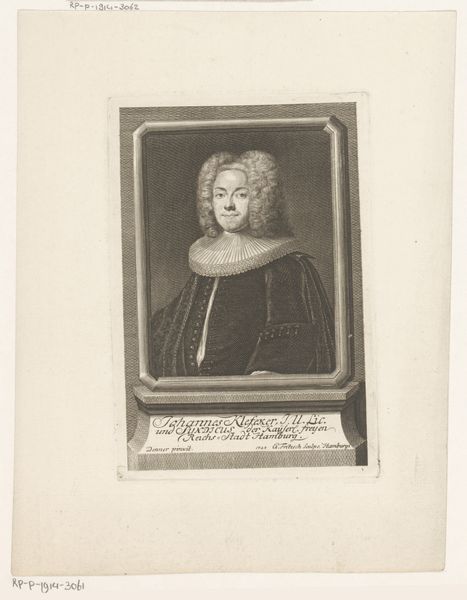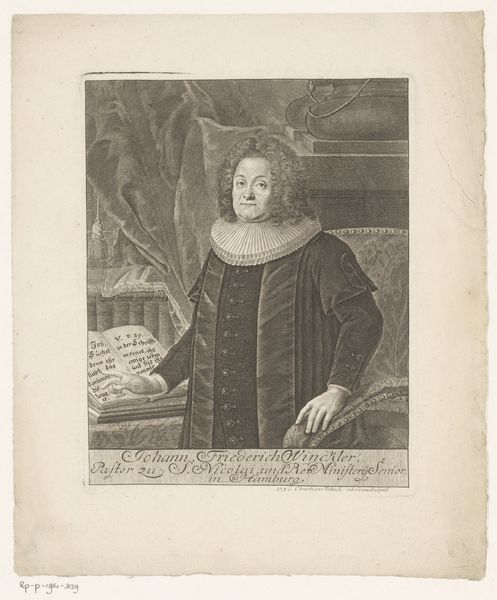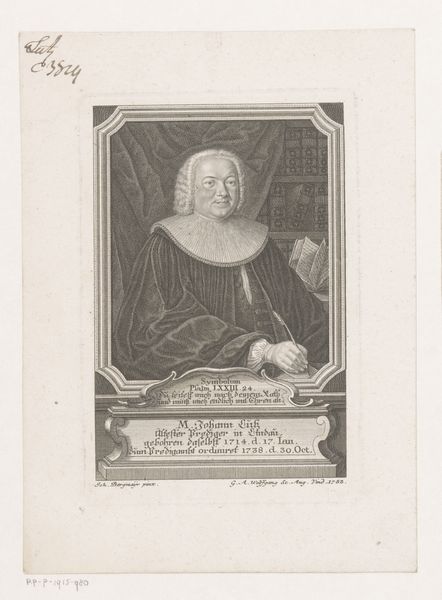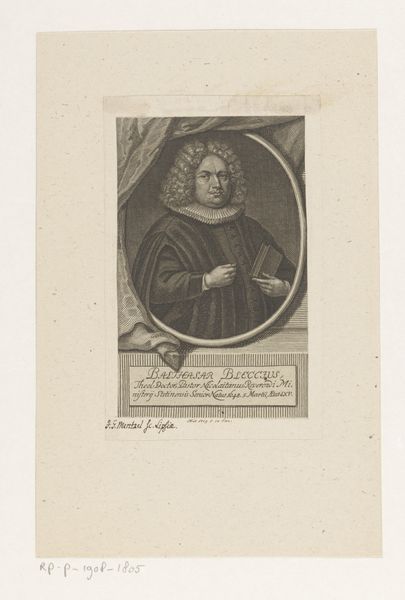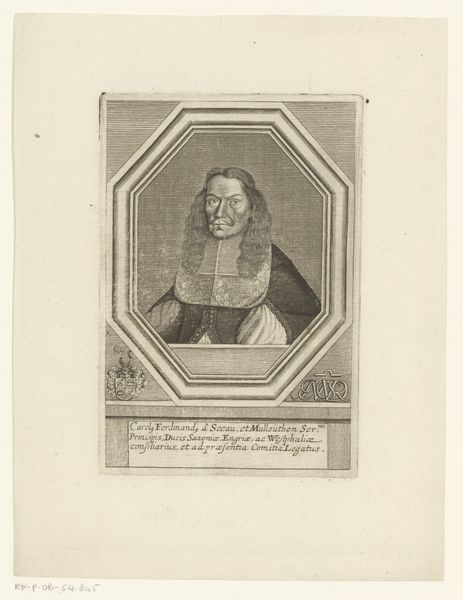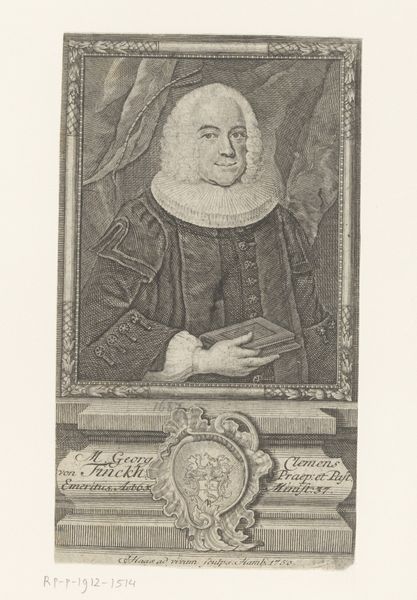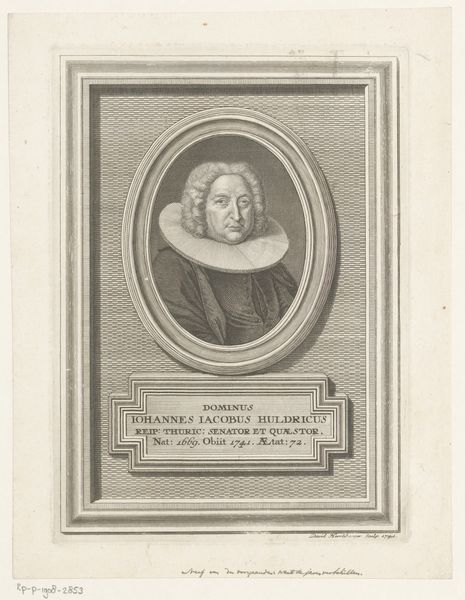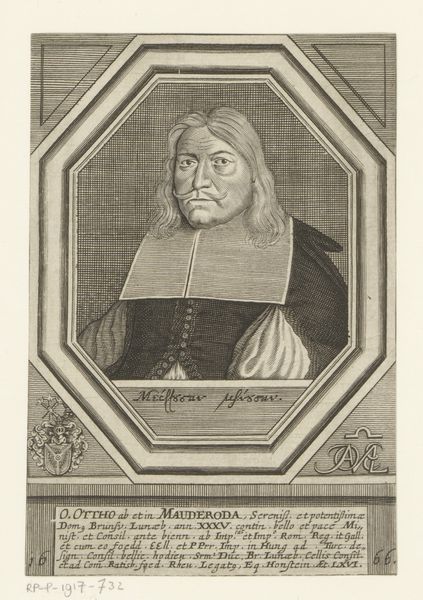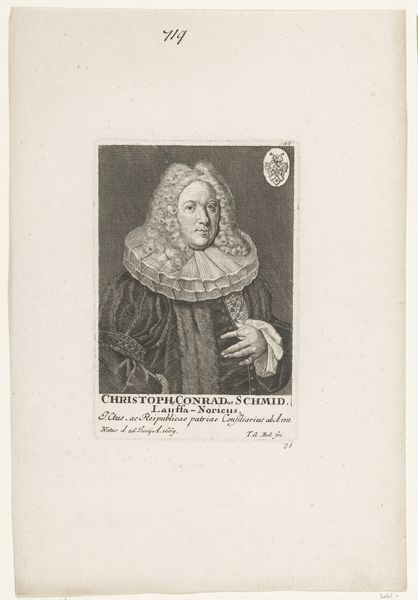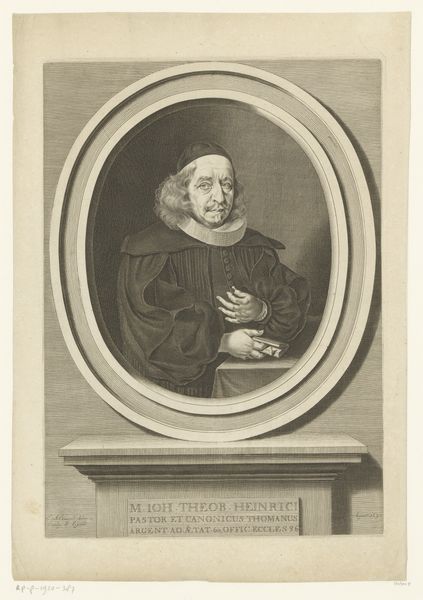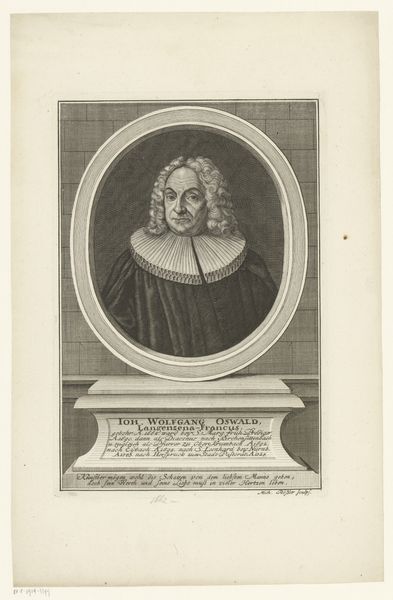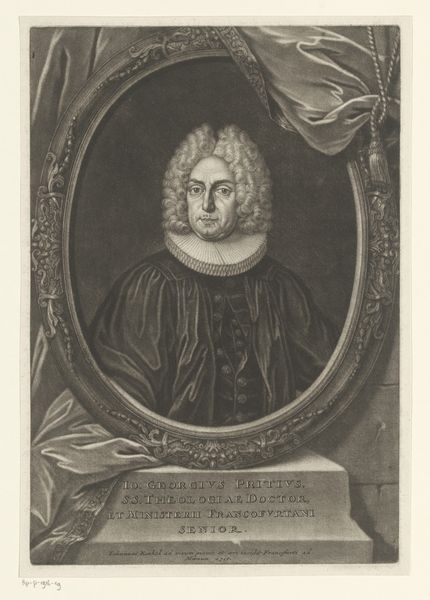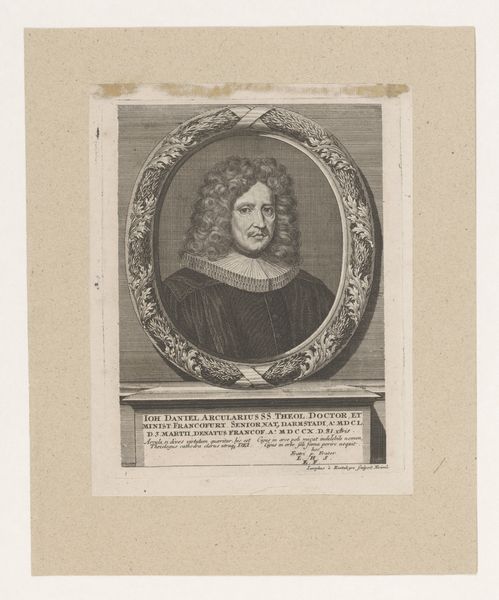
engraving
#
portrait
#
baroque
#
old engraving style
#
history-painting
#
engraving
Dimensions: height 147 mm, width 104 mm
Copyright: Rijks Museum: Open Domain
Curator: Welcome. Today, we're looking at Christian Fritzsch's "Portret van Johann Schlüter," an engraving dating back to 1728. Editor: My first thought? The stark formality strikes me, almost theatrical with the intricate collar. I’m curious about the weight of the paper and the ink. Curator: Yes, the formality is characteristic of Baroque portraiture, aiming to capture status and dignity. The artist was likely striving for meticulous detail, showcasing technical skill, right down to the quality of the lines. Think of the socio-economic implications, who could afford these engraved portraits? What did this mass production mean? Editor: You know, that's the beauty of engravings; this wasn't just for the elite! Engravings democratized image production, enabling the wider dissemination of portraits to a burgeoning middle class. But what was it like, really, to painstakingly create one of these things, tracing and etching? A labor-intensive task! Curator: Exactly, and consider the cultural exchange happening. Fritzsch likely used specialized tools, following techniques that developed across Europe, connecting this image of Schlüter in Hamburg to wider artistic practices. It makes me wonder about Schlüter. Does that solemn gaze hide a man full of dreams? Maybe the key to understanding his history hides in plain sight in his garments and this rigid pose. Editor: Possibly. Yet, all these precise details, from his elaborate wig to the buttoned coat, were there to amplify authority. It's interesting to note how consumerism intertwined with notions of status in 18th-century society, as clothing choices are a reflection of what one values in the world. The artwork gives rise to further understanding on the materials involved as a social carrier. Curator: It feels, on closer examination, that even these minute details hint at the broader tapestry of 18th-century life and social values. Almost as if he’s in dialogue with eternity, a tiny moment trying to escape time itself. Editor: It shows us art is material culture, shaped by societal values and technical progress—a tangible expression of a precise moment. Thank you. Curator: Thank you. A fascinating glimpse indeed into history and humanity through the language of art.
Comments
No comments
Be the first to comment and join the conversation on the ultimate creative platform.
